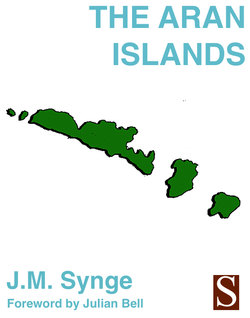The Aran Islands

Реклама. ООО «ЛитРес», ИНН: 7719571260.
Оглавление
J. M. Synge. The Aran Islands
Foreword
Introduction
Part I
Part II
Part III
Part IV
Serif Travel Library
Отрывок из книги
‘Here I am Lord of all I survey – surrounded with dirt & ignorance … It is a very
wretched Island, the soil very scanty almost all a barren rock … I get on with the people so far very well but how it will be when we begin to attack their bad ways & religion etc. I don’t know.’ The Synge who was preparing to ‘attack’ the Aran Islands was not John Millington Synge, born in 1871, but his uncle, a Protestant minister, writing his letters home twenty years before. The Reverend Alexander Synge spent three years on Inishmore (also known as Aranmor), the largest of the three rocks in Galway Bay, during the early 1850s. It was an unhappy sojourn. The minister could only draw a trickle of islanders to his services, though by way of a small victory for propriety he managed to put a stop to their Sunday games of handball. The land being unprofitable, he tried to introduce some enterprise by investing in a sailing trawler. The fishermen of Galway saw it as a threat to their catch and set out in a flotilla to board it, armed with spears and stones. After his narrow escape from the ‘organised terrorism’ of these ‘savages’ (in the words of the 1853 Galway Vindicator), the Reverend attempted to identify the ringleaders’ boats, but was set upon by massed fishwives and only escaped by jumping in Galway’s Corrib River, while the police charged the mob with fixed bayonets. Luckily for him, Alexander Synge soon afterwards found a living in London.
.....
‘We’ll see that,’ said O’Conor.
Then they put them in the scales, the daughter in one side and the gold in the other. The girl went down against the ground, so O’Conor took his bag and went out on the road.
.....